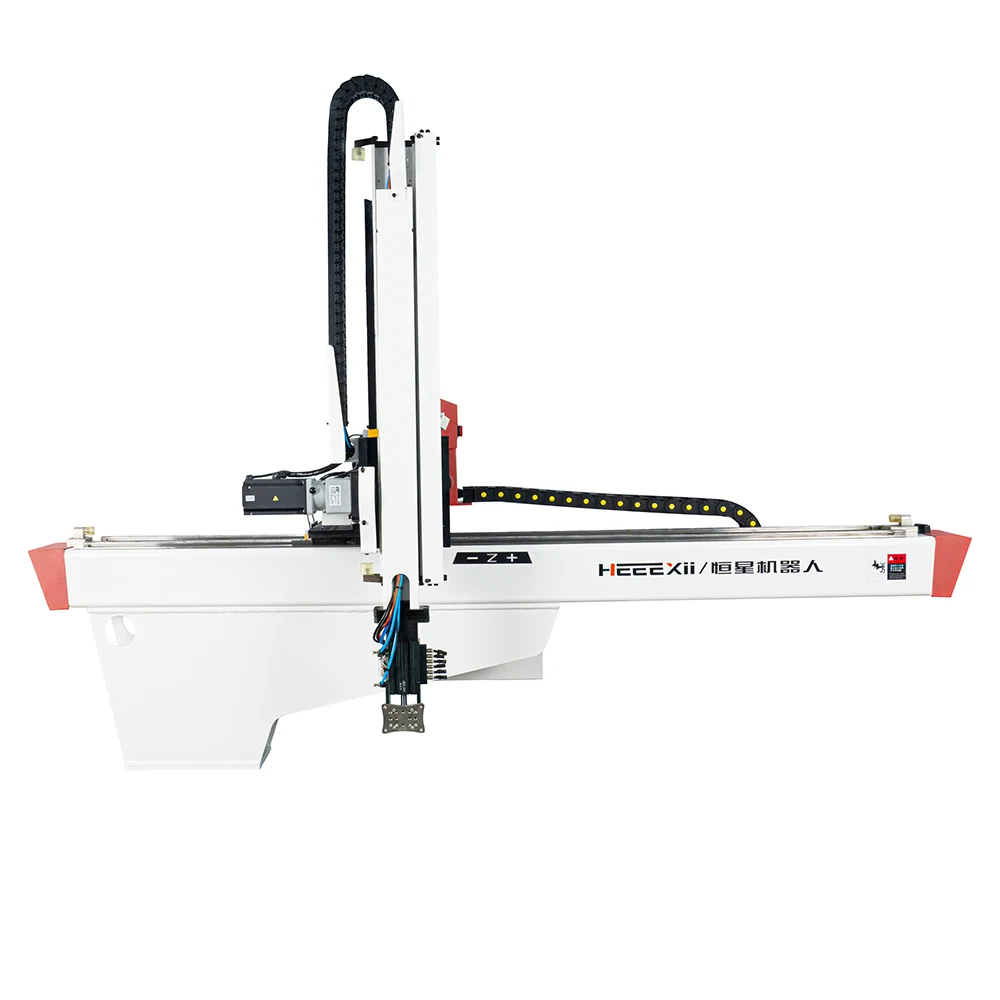Manufacturing is more than meets the eye, and it takes a little finesse to develop stellar products, that's why injection robot is so essential. The robots are specifically engineered to integrate with the injection molding machines that actually churn out plastic parts. The integration of DMF has revolutionized the polymer industries and is having a positive influence on how different companies are producing products, thereby streamlining workflow processes as well leading to improved product quality which in turn enhance operational functioning. This smart manufacturing category is where these robots are moving into beyond basic automation with the progression of technology. In this article we'll examine the future of an injection molding company with these "super" robots at its command, including how they help improve processes; specific top-of-the-line models among robotic systems for the plastics industry; benefits you may enjoy through use of such technologies and their remarkably flexibility.
The Injection Molding Future is Looking Bright with the Help of Cutting-Edge Robots
The future of injection molding is closely linked to the evolution of robotics Now that the advanced robots have been introduced, they come with artificial intelligence (AI) and machine learning built. Right inside, these will allow for predictions of when maintenance needs to happen or when is optimal time to make each type of product as well As optimizing way in which all products are made based on empirical data. They effectively increase productivity but also yield more consistent product quality and reduce waste in the process. These robots are completely in synch with the various systems of a smart factory and hence they can create an interlinked blend of some highly responsive manufacturing environments.
4 Ways Injection Robots Improve the Plastic Injection Molding Process
In any case the use of a robot in an injection molding improves various points of it. One is that they improve part handling, meaning molded parts are removed from the mold without damage and gently but fast-both needed to keep product integrity. Secondly, by performing tasks such as removing unnecessary parts and assembling components they drastically reduce the time it takes to make every product Which in turn enables continuous operation and increased production rates. Further, these robots can handle such tasks as inserting and assembling parts for molding processes, add value to the part mix for one-shot production and simplify entire manufacturing workflow. They also enhance the safety of workplaces as well reduce labor costs by decreasing human intervention in these exertions.
Characteristics of High-Level Injection Robots for Molding Machines
Injection robots have some very clearly defined characteristics of the best in class. They are both extremely precise and capable of accurately positioning parts down to the micron as well. With large reach and payload capabilities, they can be largely flexible in terms of size or weight. These robots are also equipped with the latest control systems, allowing them to communicate efficiently with injection molding machines and other factory hardware for error free data transfer as well processing fine-tuning. In addition, their rugged mechanical construction ensures they will endure the harsh environments of a continuous production application. Finally, a user interface and programming software has been developed to control the robots, which is simple- an operator can direct them without any training at all.
Returns of Investment and Benefits in Integrating Injection Robots into your Operation
Using an injection robot in conjunction with an existing operation, such as for injection molding purposes is one method that can have a great ROI - if integrated properly. Reducing labor costs - Automating repetitive manual labor also leads to an increase in productivity products while reducing the demand of manpower for these same activities. More accurate and repetitive thanks to robots achieve less scrap/home system, which is a cost saving and better product quality hence customer satisfaction. Also, they are active 24 hours and day, which means improve the productivity considerably without incurring additional labor costs. Ultimately, it helps make the manufacturing space more competitive by increasing efficiency and being flexible to changes in market demands. They also create new business opportunities related to the production of highly accurate complex and tight tolerance parts that were previously not feasible using manual methods.
Injection Molding Robots - The Versatile Solutions Explained
Perhaps the best thing about injection molding robots is just how versatile they are. Gone are the days in which these robots could only perform pick-and-place operations simply; today's systems can be programmed to undertake more complex tasks including degutting, as well as quality inspections using vision-guided technologies. Being able to be redeployed across various molds and products, this flexibility ensures that manufacturers will be able to rapidly alter production lines in response to market changes or the introduction of new product lines. In addition, they easily integrate with Industry 4.0 technologies in smart factories requiring data-driven decision making and real-time process adjustments as standard procedures. They are capable of accommodating the latest automation advancements with ease, making them strategic assets for businesses that want to invest in future-proofing manufacturing.
To sum it up, injection robots for injection molding machines are not mere automation tools; they incite advancement and improvements in the plastics manufacturing industry. Together they are a big step toward smarter, faster, more flexible production systems where precision and efficiency combined with customization underpin the excellence of future manufacturing.
 EN
EN
 AR
AR
 BG
BG
 HR
HR
 CS
CS
 DA
DA
 NL
NL
 FI
FI
 FR
FR
 DE
DE
 EL
EL
 HI
HI
 IT
IT
 JA
JA
 KO
KO
 NO
NO
 PL
PL
 PT
PT
 RO
RO
 RU
RU
 ES
ES
 SV
SV
 LV
LV
 SR
SR
 UK
UK
 VI
VI
 HU
HU
 TH
TH
 TR
TR
 FA
FA
 MS
MS
 GA
GA
 BE
BE
 IS
IS
 LA
LA
 MN
MN
 KK
KK



